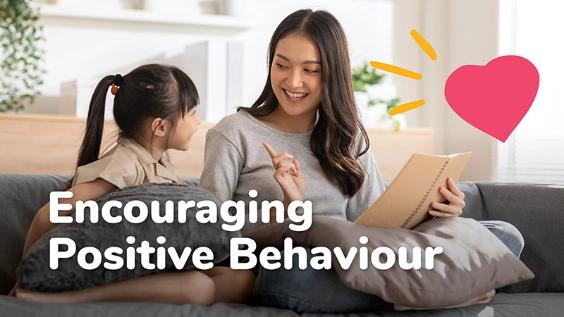
Encouraging Positive Behaviour
Effective Parenting Tips
Promoting positive behaviour in children is a common challenge for parents. Understanding behavioural development and employing effective strategies can help foster a supportive and nurturing environment for your child. This guide will provide you with practical tips to encourage positive behaviour and address behavioural issues constructively.
Understanding Behavioural Development
Children’s behaviour is influenced by various factors, including their environment, parenting style, and individual temperament. Understanding these factors can help you tailor your approach to promoting positive behaviour.
1. Environmental Influences: A child’s surroundings play a significant role in their behaviour. A stable, safe, and engaging environment encourages positive interactions and development.
2. Parenting Style: Authoritative parenting, characterised by warmth, structure, and consistent discipline, has been shown to promote positive behaviour. It’s essential to balance nurturing support with clear expectations.
3. Individual Temperament: Every child is unique, and their temperament influences how they respond to different situations. Recognising your child’s temperament can help you adapt your strategies to meet their specific needs.
Setting Clear Expectations and Consistent Rules
Establishing clear expectations and consistent rules is crucial for promoting positive behaviour. Here’s how to do it effectively:
1. Communicate Clearly: Use simple and direct language to explain what behaviours are expected. Consistency in your messages helps reinforce these expectations.
2. Set Age-Appropriate Rules: Ensure that rules are appropriate for your child’s age and developmental stage. For example, younger children may need simpler rules compared to older kids.
3. Be Consistent: Consistency in enforcing rules is key to helping children understand boundaries. Inconsistencies can confuse children and make it harder for them to learn appropriate behaviours.
Positive Reinforcement Techniques
Positive reinforcement is a powerful tool for encouraging desirable behaviours. Here are some effective techniques:
1. Reward Charts: Create a reward chart to track positive behaviours. Offer small rewards for achieving specific goals, such as stickers or extra playtime.
2. Praise and Encouragement: Regularly acknowledge and praise your child for their positive behaviours. Specific praise, like “Great job sharing your toys with your sister,” reinforces what they did well.
3. Special Privileges: Grant special privileges as rewards for consistent positive behaviour. This could include choosing a family activity or an extra bedtime story.
Addressing Negative Behaviour
Effectively addressing negative behaviour is just as important as encouraging positive actions. Here are some strategies:
1. Time-Outs: Time-outs can be used to give children a break and time to calm down when they exhibit negative behaviours. Ensure the time-out area is safe and distraction-free.
2. Natural Consequences: Allow children to experience the natural consequences of their actions. For example, if they refuse to wear a coat, they may feel cold outside.
3. Calm-Down Methods: Teach your child techniques to manage their emotions, such as deep breathing or counting to ten. These methods can help them regain control during challenging situations.
Conclusion
Promoting positive behaviour in children involves understanding their developmental needs, setting clear expectations, and using effective reinforcement techniques. By addressing negative behaviours constructively, you can create a supportive environment that fosters growth and well-being. For more information and helpful resources please visit Raising Children Australia.
For personalised advice and support in managing your child’s behaviour, consider booking a consultation with Tiny Tots Paediatrics. Our experts are dedicated to helping parents navigate the complexities of child behaviour and development.
